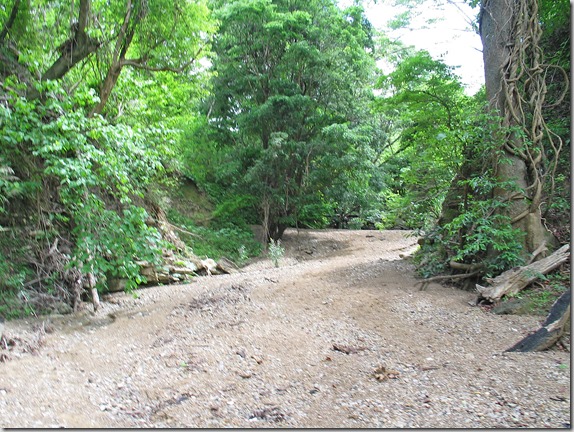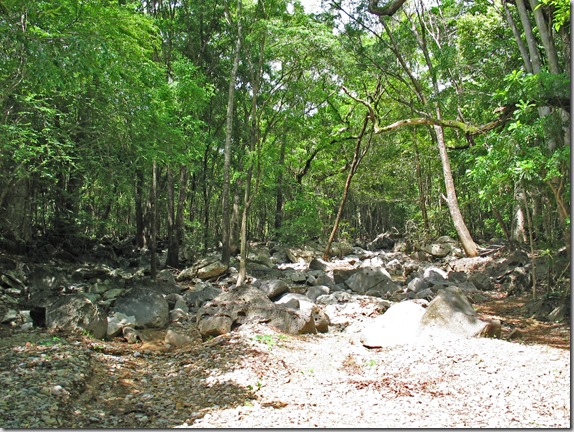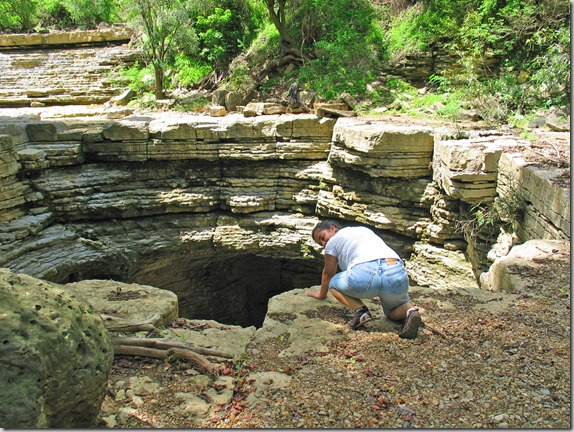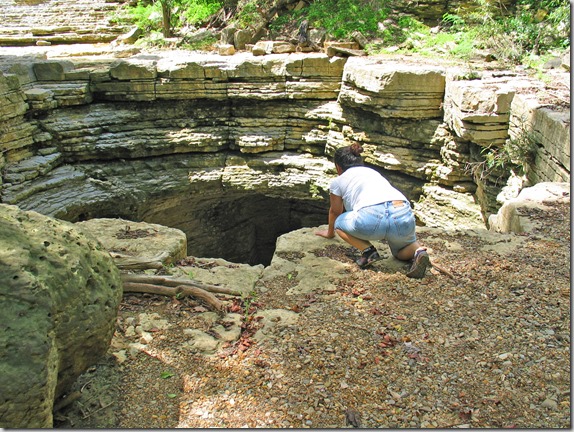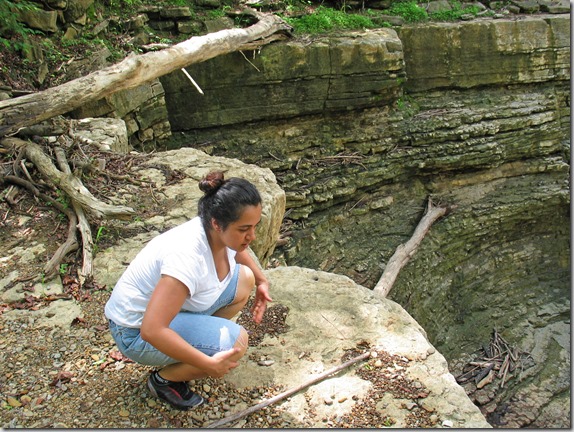We awoke early in the morning to have breakfast and prepare for our excursion leaving at 7:30 AM. The weather was looking good for our trip to the Ankarana Nature Reserve to see some wildlife and unusual land formations. Our driver picked us up on time, and we set out for Ankarana, about 130 km south of Antsiranana.
After stopping to pick up our picnic lunch, before leaving we had to steer around a goat that had decided to sit down in front of the car.

Continuing down the road, we again passed through some flooded streets in town that had still not been cleared from the cyclone a few days earlier. We had to drive through the water pictured below.
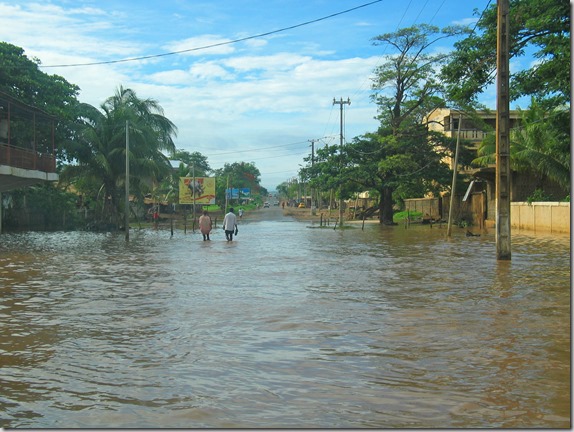
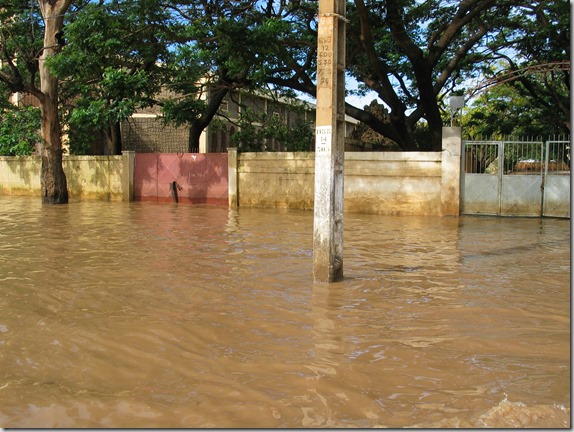
We then headed south out of town, along RN6. I took photos along the way, and have posted a few of them below.
RN6 heading south out of Antsiranana…

One of the many small mountains along the way…

“Zebu crossing” sign… We don’t have these back in Canada!
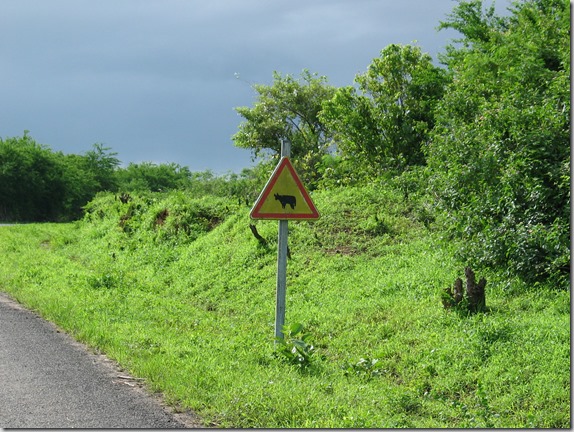
Herding geese?
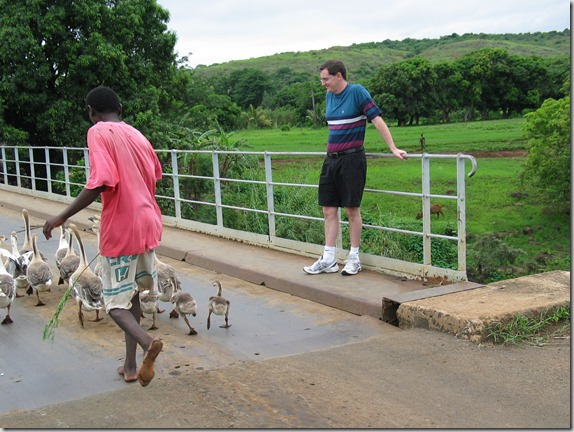
One of the many rivers we would cross, and there were a lot of them…
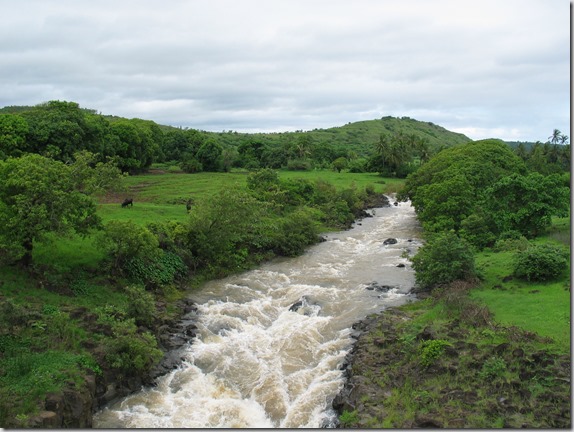

Eating and drinking fresh coconut at the side of the road… It’s really good!
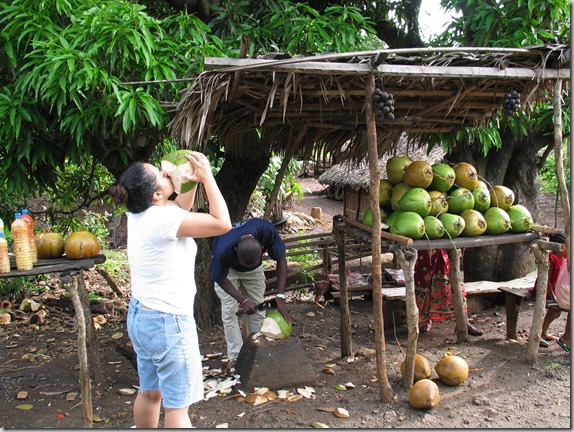
Red cliffs along the road…
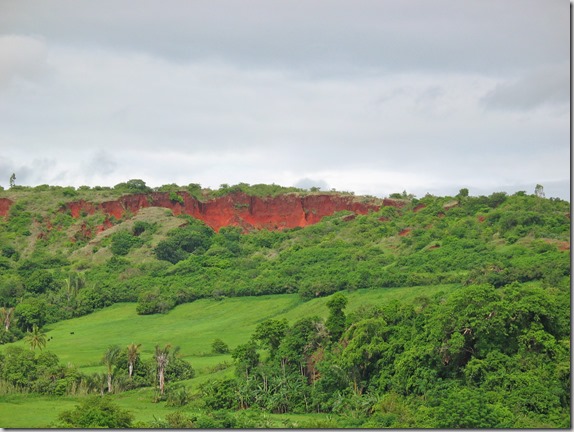
Chameleon we nearly squished on the road…

Sapphire village along the way. Apparently the area is rich with sapphires and every roadside stand is trading them…
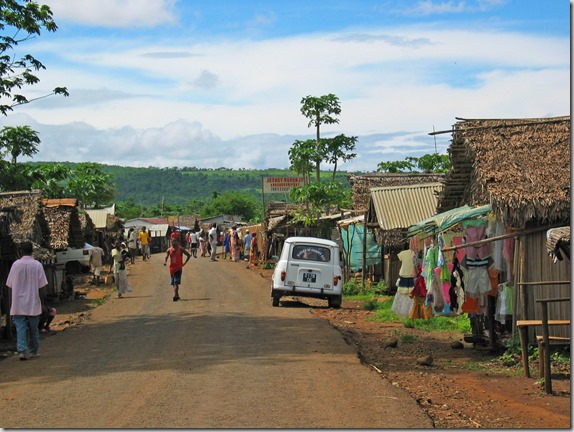
We arrived at Ankarana National Park where we met our park guide. Guides are mandatory in the park, and for good reason–It would be very easy to get lost or hurt without one. This nature reserve is very large, 18,255 ha, and many visitors here hike for 30 or 40 km while camping over several days. We would only be hiking for a few hours. Shown below is the park entrance.

Our guide was very knowledgeable, and had studied botany in university in Madagascar, so he could tell us everything about nearly everything we saw here. Fortunately, our guide was also the only guide around who spoke English, as well as French and Malagasy. Here are some photos of our journey through the reserve.
A millipede moving along the ground…

Moving over some loose rocks…
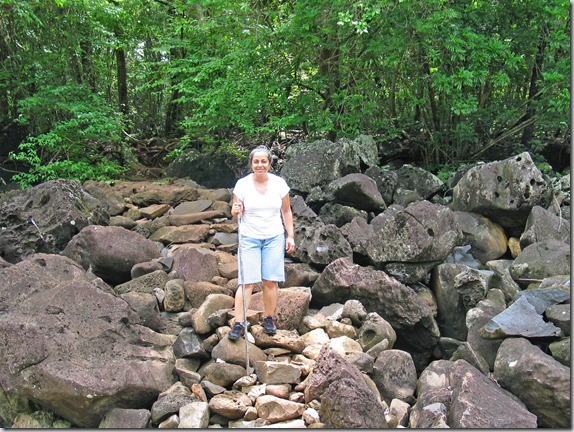
An orange crab with purple legs…

The white things that look like flowers are actually insects…

Look very close to see the lemur in the tree, centre of photo. This is one of ten species of lemurs found in the park, and we would see four of them before the day is over.

Parrots in the trees…
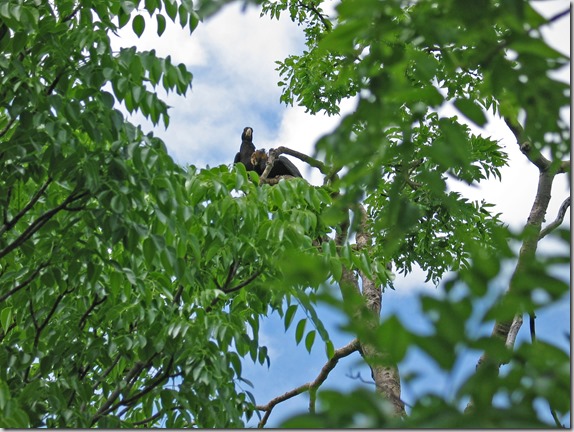
After hiking a bit through the forest, we would now climb up to see the Tsingy, which is a very unusual rock formation. These a sharp spiny rock formations, and I’m sure it would hurt like hell if you fell on them. Here we are starting to climb up.

On top of the Tsingy…
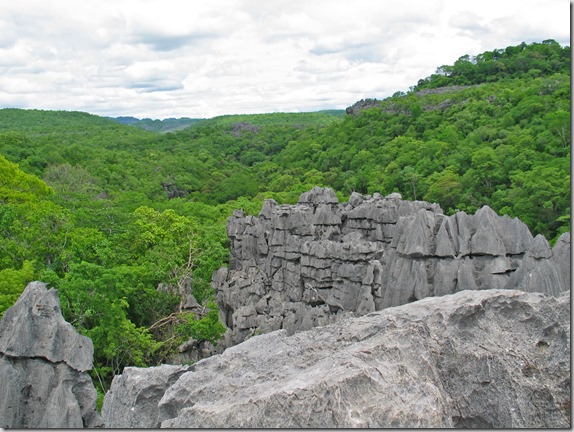


Tsingy close up with water pooled inside…


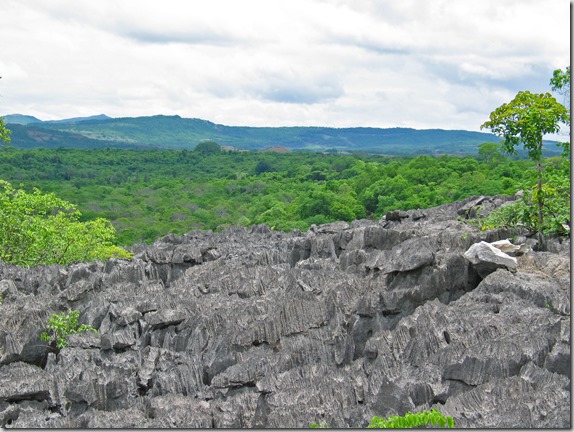
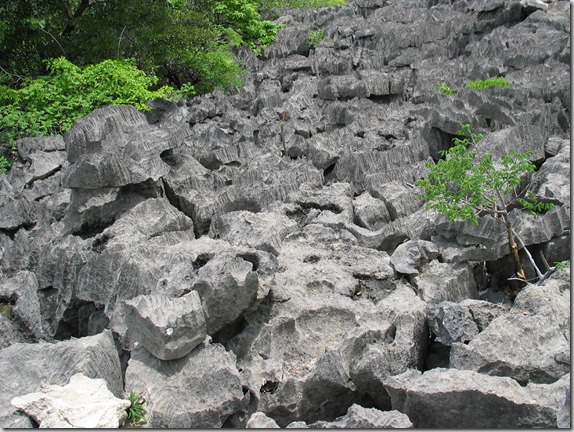
Very unusual tree that keeps water inside this bulge…
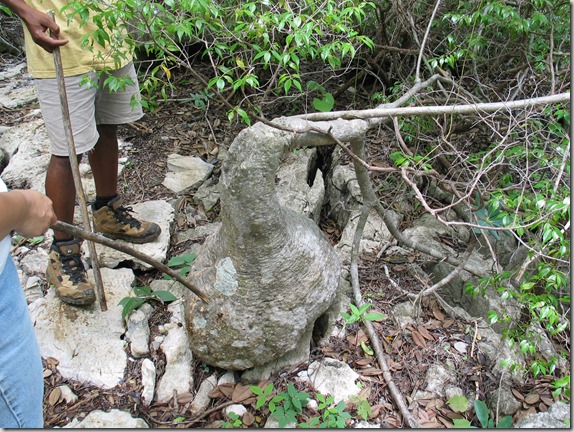
More Tsingy close up…
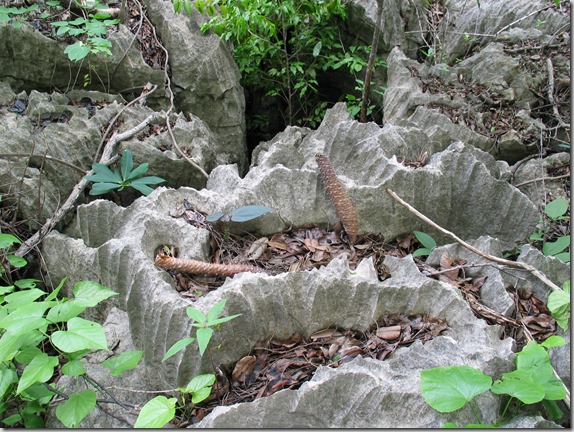
Holy shit it’s hot here!
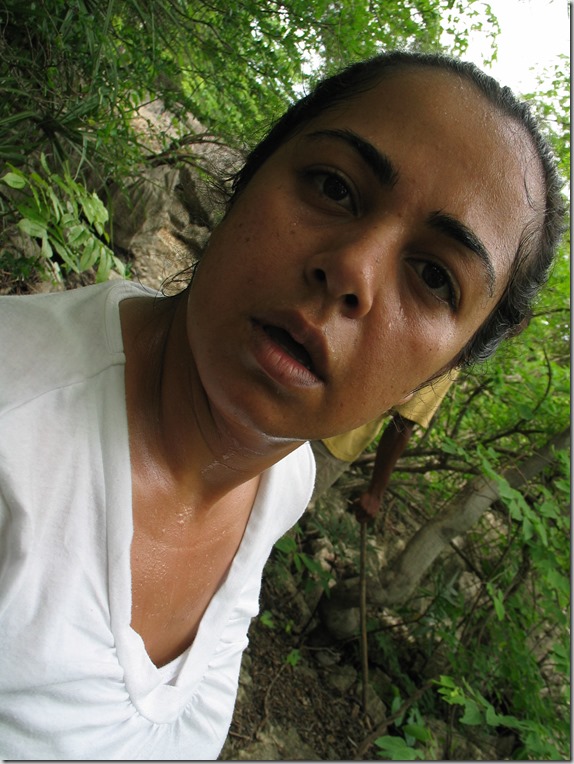
Watch your step, it’s a long way down…

Dave and Nadine on top of the Tsingy…
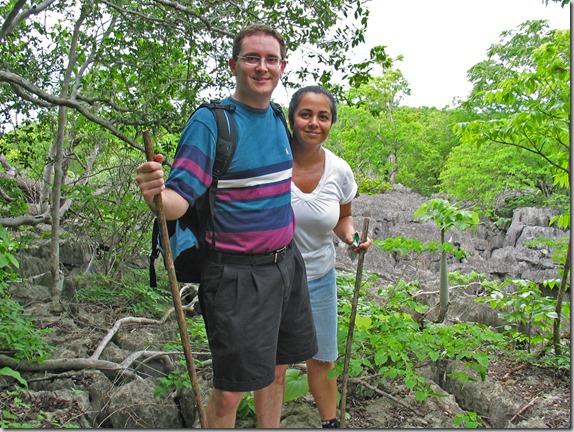
Dave walking very carefully on the Tsingy with our guide in the background.
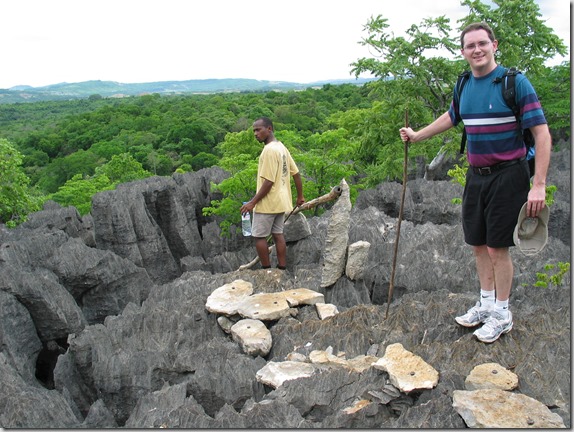
More Tsingy. These rocks are damn sharp.
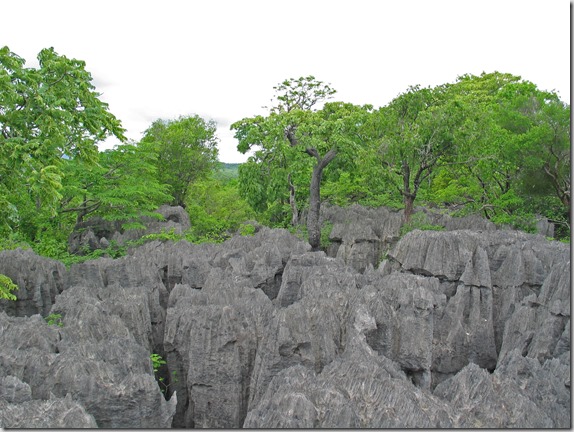

Climbing back down. Fat people would have considerable difficulty.
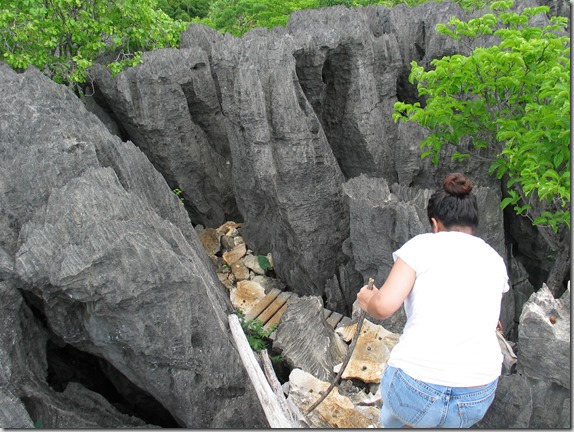
Still climbing down…
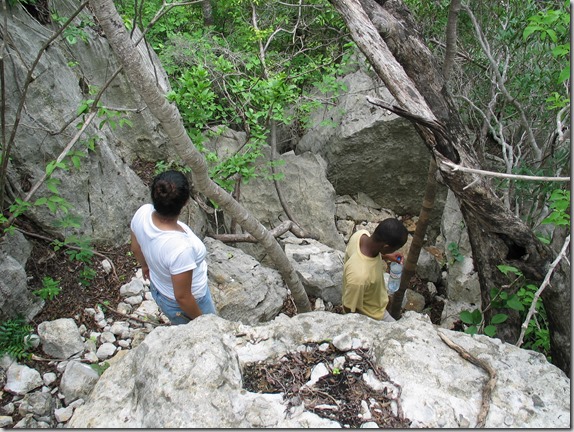
And we’re still climbing down…
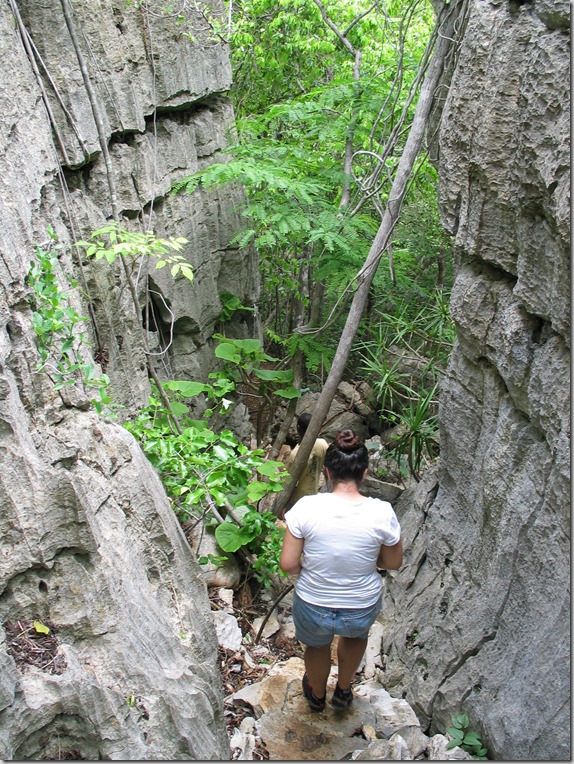
A few lemurs in the trees…
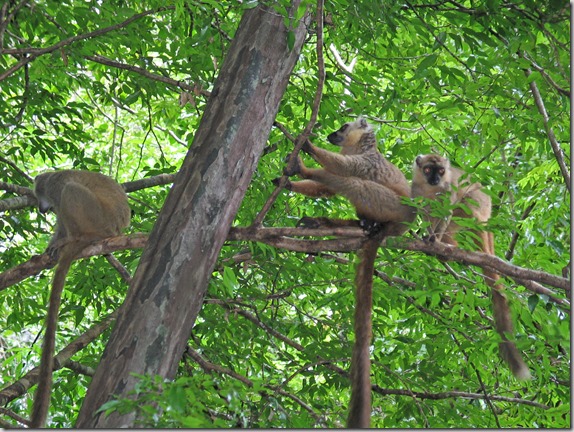
More lemurs…
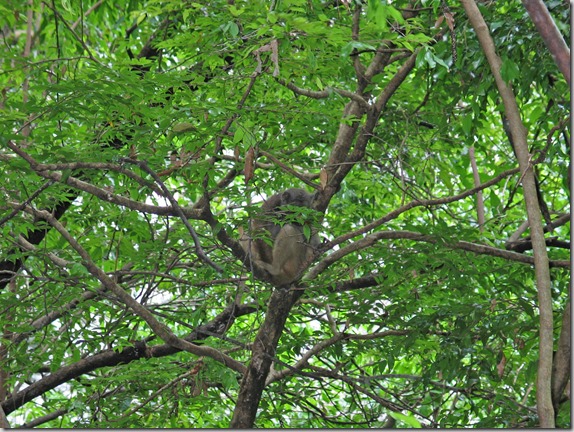
Another lemur…
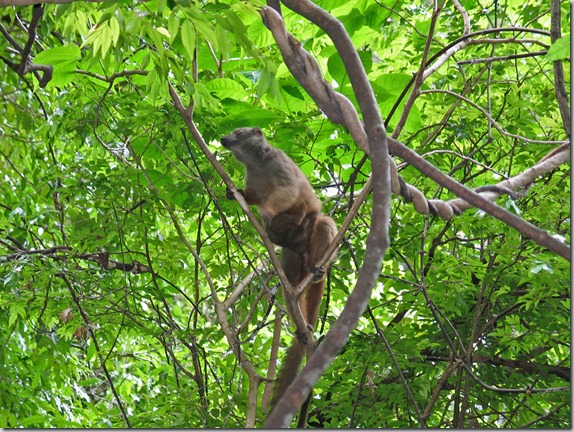
Below are a couple of short video climbs of the lemurs in the trees.
After a quick break watching the lemurs, it’s back to climbing down toward the bat cave.
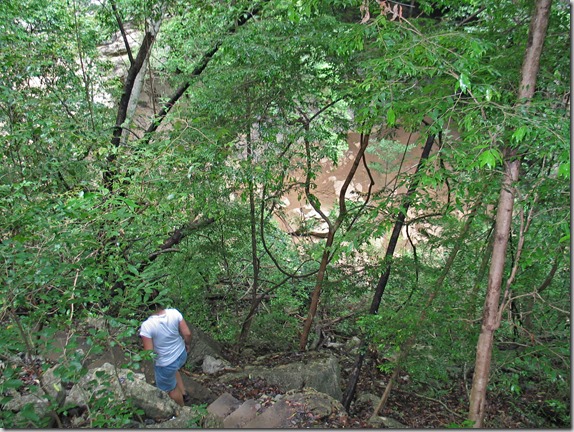
Holy crap! Are we going to have to climb back up again?
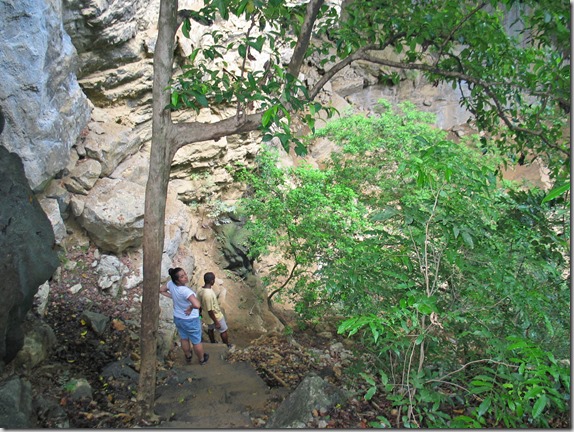

OK. I think we’ve finally made it to the bottom!

At the entrance to the bat cave…

We entered the bat cave, but didn’t go very far. It was really muddy in there. Supposedly it goes on for about 4 km and there is an exit at the other end. Our guide also said that the river in the bottom sometimes rises by many metres to the point where everything you see in the picture above is all under water.

Inside the bat cave…

Coming back out of the bat cave…

We then began the dreaded climb back up. It was very steep and incredibly tiring, and the heat and humidity didn’t help.
Here is a baobab tree in the forest. There are about 7 types of baobab trees in Madagascar. We saw 3 of them in the Morondava area. There are a few other types in this area.
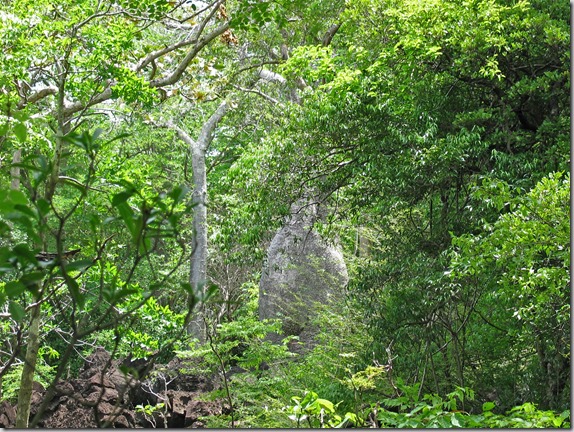
Lemur peeking down at us from the tree…
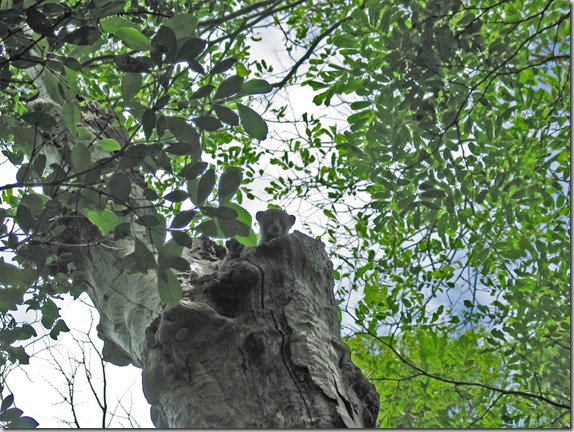

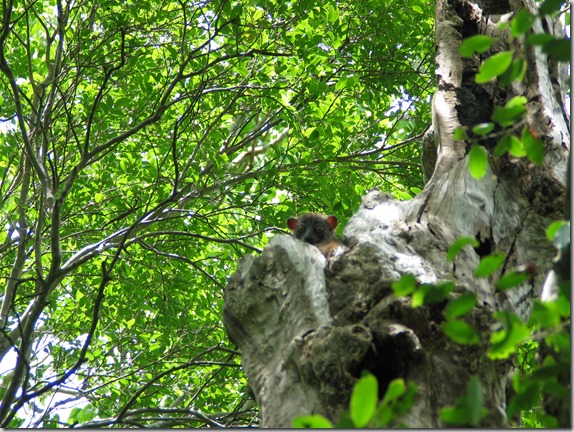
We then walked to an area where you see the convergence of 3 rivers. Actually, the rainy season has started yet, so we only saw the river beds, but I’m told that if we were to come back in a month or two, there would be a lot of water moving through.
The interesting thing here is that all three rivers come from different directions and converge in one spot, but there isn’t a fourth stream as an outlet for the rivers. In fact, the 3 rivers all empty into an underground river that then flows for 20 km underground into the Mozambique Channel.
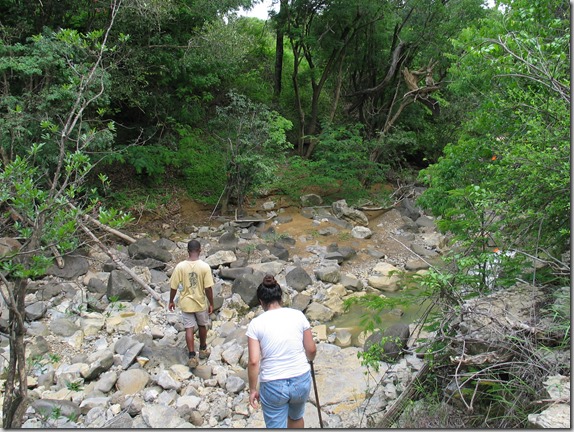
Following one of the rivers…
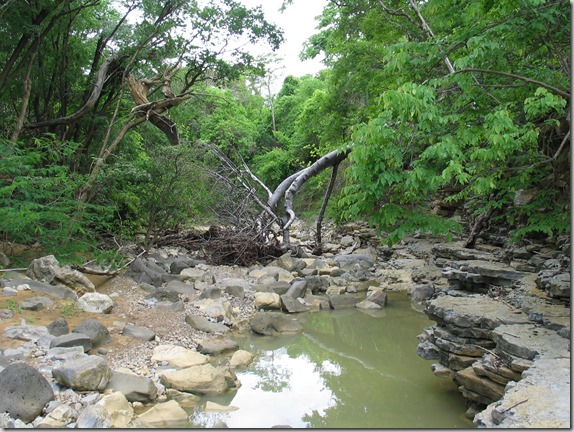

Fossil in the riverbed…

One of the 3 rivers approaching the big hole…

The second of the 3 rivers…
The third of the 3 rivers…
Approaching the big hole…
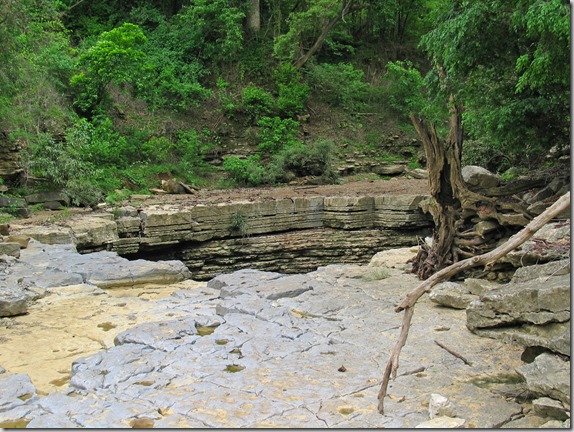
Nadine peeking over the edge…
Looking down the hole…
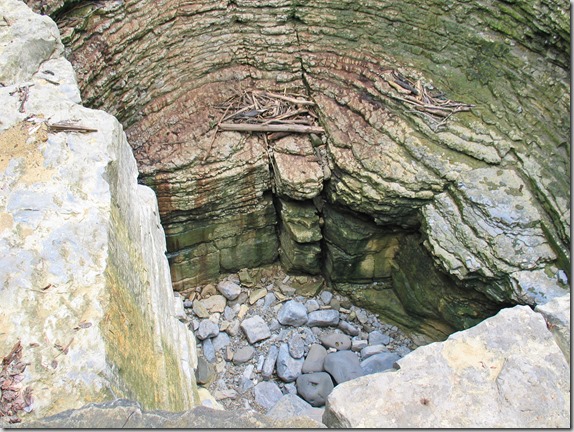
Notice the entrance to the underground river at the bottom of the hole…
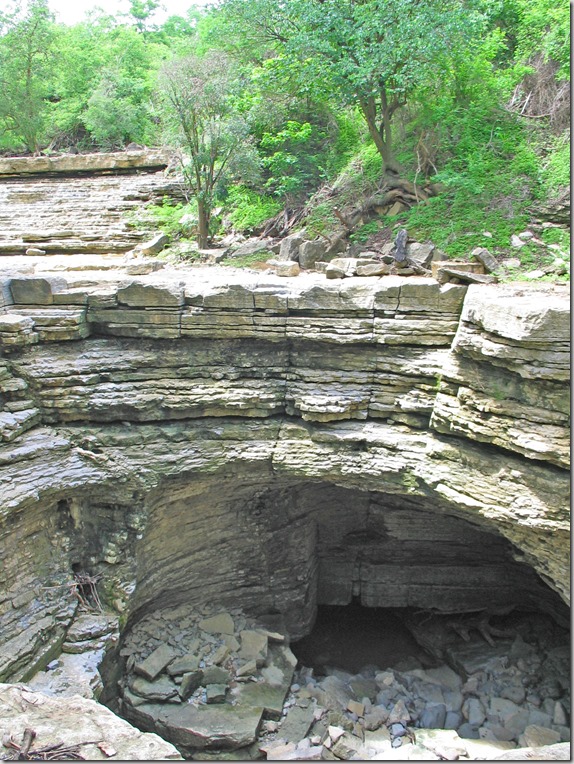
We then walked up one of the rivers and headed for the park exit to have some lunch.
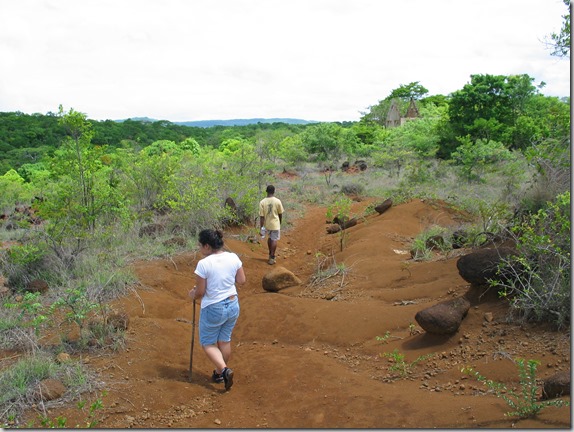
Here is a gecko who joined us for lunch…
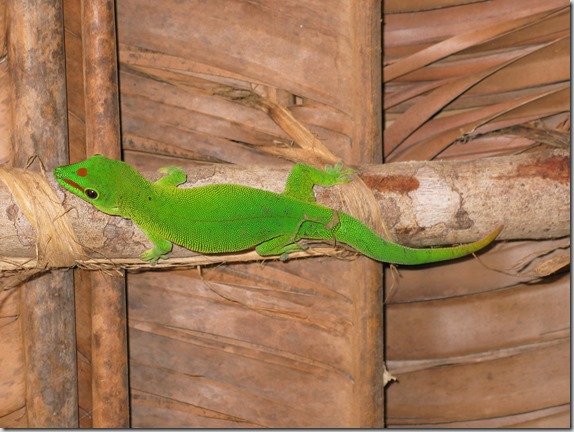
After lunch, we headed back to Antsiranana. I think we slept most of the way, so I didn’t take many photos on the return trip. We then had some ice cream at the hotel bakery and spent the evening relaxing at the hotel.

